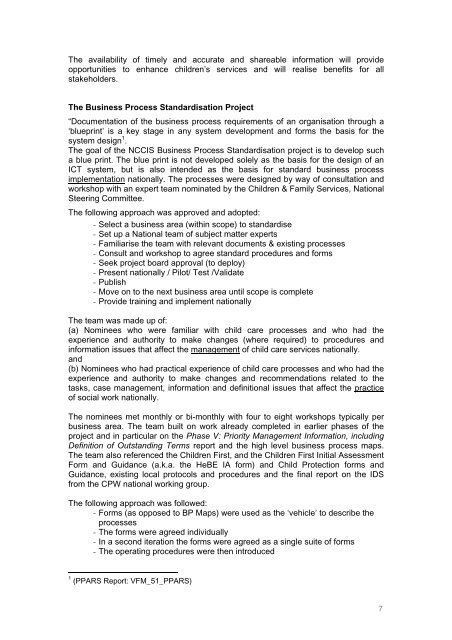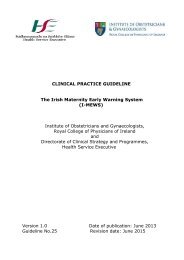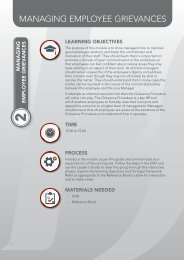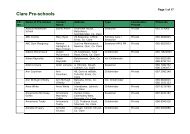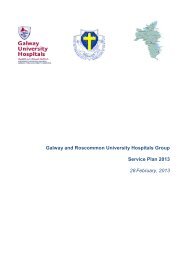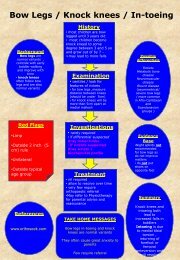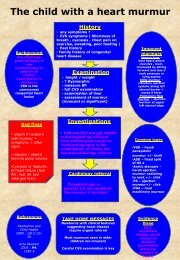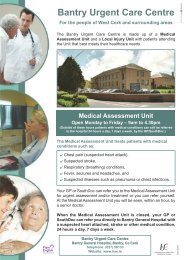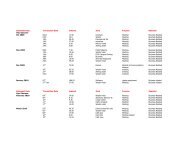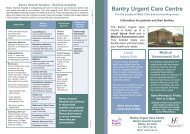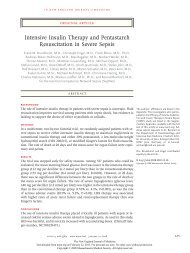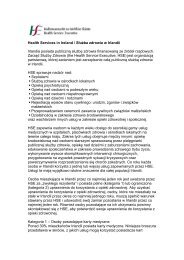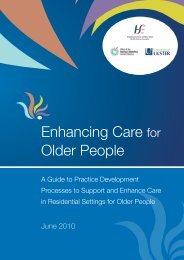NCCIS Business Process Standardisation Project - Health Service ...
NCCIS Business Process Standardisation Project - Health Service ...
NCCIS Business Process Standardisation Project - Health Service ...
Create successful ePaper yourself
Turn your PDF publications into a flip-book with our unique Google optimized e-Paper software.
The availability of timely and accurate and shareable information will provide<br />
opportunities to enhance children’s services and will realise benefits for all<br />
stakeholders.<br />
The <strong>Business</strong> <strong>Process</strong> <strong>Standardisation</strong> <strong>Project</strong><br />
“Documentation of the business process requirements of an organisation through a<br />
‘blueprint’ is a key stage in any system development and forms the basis for the<br />
system design 1 .<br />
The goal of the <strong>NCCIS</strong> <strong>Business</strong> <strong>Process</strong> <strong>Standardisation</strong> project is to develop such<br />
a blue print. The blue print is not developed solely as the basis for the design of an<br />
ICT system, but is also intended as the basis for standard business process<br />
implementation nationally. The processes were designed by way of consultation and<br />
workshop with an expert team nominated by the Children & Family <strong>Service</strong>s, National<br />
Steering Committee.<br />
The following approach was approved and adopted:<br />
- Select a business area (within scope) to standardise<br />
- Set up a National team of subject matter experts<br />
- Familiarise the team with relevant documents & existing processes<br />
- Consult and workshop to agree standard procedures and forms<br />
- Seek project board approval (to deploy)<br />
- Present nationally / Pilot/ Test /Validate<br />
- Publish<br />
- Move on to the next business area until scope is complete<br />
- Provide training and implement nationally<br />
The team was made up of:<br />
(a) Nominees who were familiar with child care processes and who had the<br />
experience and authority to make changes (where required) to procedures and<br />
information issues that affect the management of child care services nationally.<br />
and<br />
(b) Nominees who had practical experience of child care processes and who had the<br />
experience and authority to make changes and recommendations related to the<br />
tasks, case management, information and definitional issues that affect the practice<br />
of social work nationally.<br />
The nominees met monthly or bi-monthly with four to eight workshops typically per<br />
business area. The team built on work already completed in earlier phases of the<br />
project and in particular on the Phase V: Priority Management Information, including<br />
Definition of Outstanding Terms report and the high level business process maps.<br />
The team also referenced the Children First, and the Children First Initial Assessment<br />
Form and Guidance (a.k.a. the HeBE IA form) and Child Protection forms and<br />
Guidance, existing local protocols and procedures and the final report on the IDS<br />
from the CPW national working group.<br />
The following approach was followed:<br />
- Forms (as opposed to BP Maps) were used as the ‘vehicle’ to describe the<br />
processes<br />
- The forms were agreed individually<br />
- In a second iteration the forms were agreed as a single suite of forms<br />
- The operating procedures were then introduced<br />
1 (PPARS Report: VFM_51_PPARS)<br />
7


